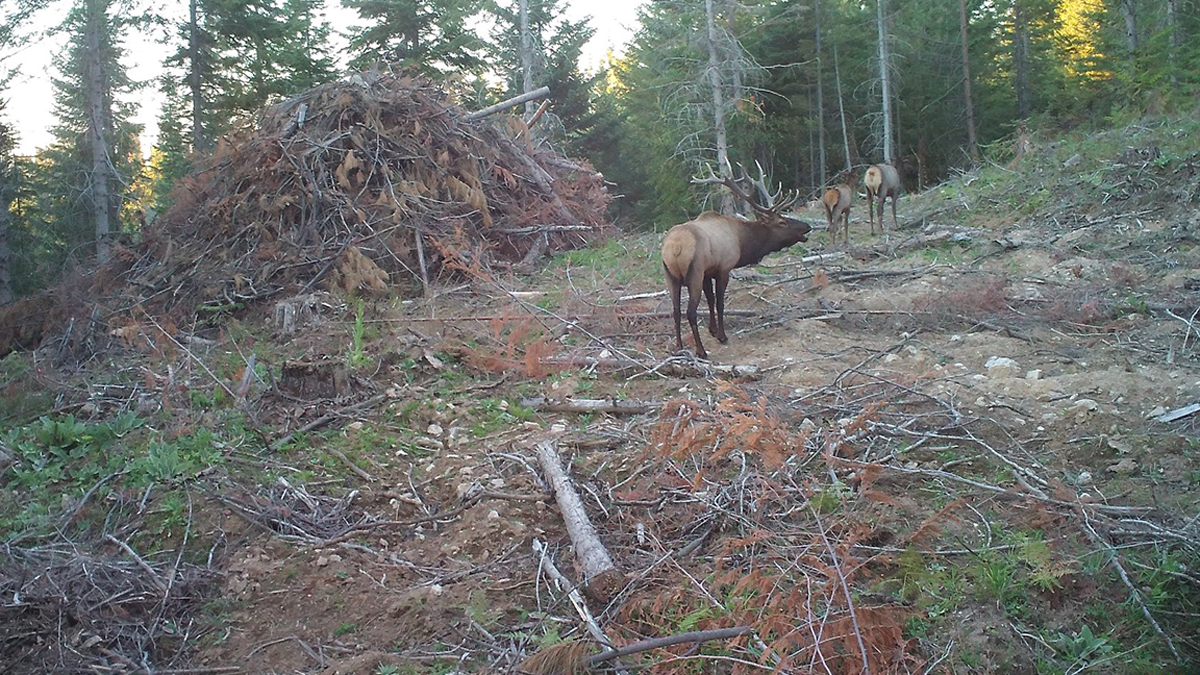Below is a news release from the Idaho Department of Fish and Game.
The Idaho Fish and Game Commission on March 18, 2021, approved big game seasons for the next two years. The 2021-2022 Idaho Big Game Seasons and Rules booklet will be available on Fish and Game’s website in early April, and printed copies will be available at Fish and Game offices and license vendors in late April or early May.
The seasons set by commissioners pertain to deer, elk, pronghorn, black bear, mountain lion, and gray wolf, and the proposals were the product of extensive outreach to hunters. Some of the major changes for the 2021-22 seasons are included below, but more detailed information and additional changes can be found in the 2021-2022 Idaho Big Game Seasons and Rules booklet.
Mule deer
Mule deer hunters in the Upper Snake and Southeast regions will see reduced antlerless mule deer harvest opportunity in an effort to help mule deer populations rebound. In the Southeast region, nearly all antlerless opportunity has been eliminated for the 2021-22 seasons — including general youth seasons, general archery-only seasons, and controlled antlerless seasons — in response to underperforming mule deer populations and public concern.
For the same reasons, mule deer hunters in the Upper Snake Region will see reductions in general youth seasons, general archery-only seasons, and controlled either-sex seasons. There was broad public support for both proposals.
In Southwest Idaho, mule deer hunters will see a substantial increase in the number of either-sex controlled hunt tags available for Controlled Hunt Area 39-1 — up to 2,000 from 1,500. While there was some public concern about the increase in tags, Fish and Game wildlife biologists said the area has an abundant mule deer population, and that they have observed a declining fawn survival rate in recent years.
“We are seeing some indications that this population of mule deer is nearing the capacity that the habitat can support,” Mike McDonald, acting state wildlife game manager, told the Commission. “And that is why we proposed this increase in controlled hunt tags.”
Elk
Major changes for elk hunters include an increase in antlerless opportunity in the Boise River Elk Zone, where a 2021 survey showed both bull and cow populations are above objectives; and a reduction in antlerless hunting opportunity in the Smoky-Bennett Elk Zone.
The Smoky-Bennett Elk Zone is an area where Fish and Game has been working to reduce the population to bring it back within its population objectives in recent years by providing hunters with ample antlerless opportunity. Results from an aerial survey flown in 2021 showed that elk numbers in the zone were successfully reduced, which prompted wildlife managers to propose a substantial reduction in the number of over-the-counter antlerless tags for the 2021-22 seasons, as well as reduce the number of antlerless controlled hunt tags.
Pronghorn
In a major statewide change for pronghorn hunters, the Commission approved changing unlimited archery controlled hunts for pronghorn into first-choice only hunts. Wildlife managers proposed the change in response to steadily increasing numbers of archery pronghorn hunters over the past 10 years and an effort to reduce hunter numbers in these controlled hunts. Going hand-in-hand with that change, the Commission also approved the reorganization of pronghorn units into 10 hunt areas for first-choice only controlled archery hunts.
Black Bear
A major change for black bear hunters in Idaho was centered around the Weiser-area, including Units 22, 31, 32 and 32A, and a proposal developed by the Weiser Black Bear Working Group — a diverse group of stakeholders representing the needs of hunters and landowners..
For the 2021-22 seasons, these units will move away from a strictly controlled hunt bear harvest framework. General season opportunity will be allowed on, or within, one mile of private land, with baiting and hounds allowed as tools to address private property conflicts. Controlled hunts will continue on other public land. The changes were proposed in order to meet the goal of reducing or eliminating private land and human conflict caused by bears, while maintaining healthy and viable bear populations in areas where they are not causing problems.
Mountain Lion
Major changes for mountain lion hunters include the removal of male and female quotas statewide, and allowing the use of electronic calls. The changes were proposed as an effort to increase lion harvest and reduce predation on deer and elk, and reduce human conflicts and livestock depredations.
While there were some concerns from the public over removing quotas in some areas, Fish and Game biologists indicated that the changes were unlikely to result in over-harvest of mountain lions, pointing to other areas that maintain healthy and viable lion populations despite not having harvest quotas. Mandatory check requirement for all mountain lion harvests remain in place, so Fish and Game staff can monitor the harvest in real time and recommend closing a season if needed.
Gray Wolf
The Commission approved expanding wolf hunting to year-round in much of the state, which includes areas with chronic predation and depredation issues, as well as units 21, 21A, 30, 30A, and 37A.
Wolf trapping was set to open Sept. 10 in those same areas, excluding units 49 and 62, due to public concern with this proposal in those areas. Wolf trapping season was approved on private property, year-round, foothold traps only in units with chronic wolf-related livestock depredations, also excluding units 49 and 62.
Wolf trapping on public land was approved to open on Oct. 10 in much of Southwest and south-central Idaho to mirror the rest of the state. Wolf trapping remains closed in units 48 and 49 and the portion of units 38 and 39 within Ada County.
White-tailed deer
No major changes, but adjustments to season dates in some units.
(Photo source: Idaho Department of Fish and Game)
